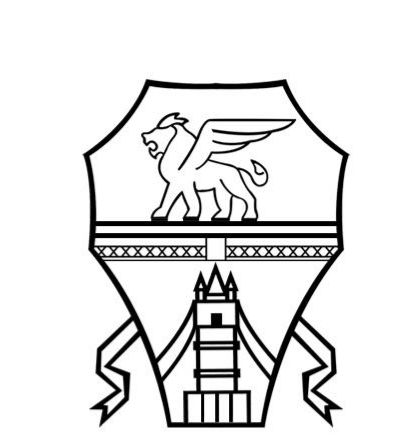Being found by search engines is very important for the success of your site internet ; let’s see together what is SEO for multilingual sites and how to exploit it.
A multilingual website is a site that has been translated into multiple languages and that typically offers services to users from different countries. An example is the ANSA or Il Sole 24 ore website, where by clicking the buttons of other languages, you can access the translated content.
Sometimes you may need to create a multi-regional site, a site that has dedicated content for specific geographic areas. Often there are sites that are both multilingual and multiregional ( ANSA is again a good example).
Expanding your site by supporting multilingual and multi-region can become very complicated.
The complexity arises from the presence of different versions of the site; therefore it is highly recommended to have the original version thoroughly tested and really solid before venturing into such large-scale modifications.
In this guide we will see some tips to follow for creating multilingual sites and how to use the WPML plugin to achieve your goals.
SEO tips for multilingual sites
Before we can talk about how to use the WPML plugin for theSEO for multilingual sites, we must create a solid foundation for your site and follow the precautions required by search engines such as Google .
Clarity of language
When Google reads your site it determines the language used depending on the visible content. This means that even if you use code to indicate the language used, the search engine only gives weight to the visible content.
The best way to help Google correctly identify the language used is to use a single language per page.
Often it happens to see sites with important content translated into multiple languages but updates or posts created later that are not translated. The above should be avoided because it could have undesirable effects in the search results.
Automatic and poor quality translations should also be avoided as much as possible , as they can be interpreted as spam. You can modify the robots.txt file to restrict the content of your site subject to scanning by search engines .
Ease of identification of site versions
The content in the different languages must be kept on URL different; the use of cookies to view translated pages is not recommended. Give users the ability to have access to the language selection menu on each page.
The practice of redirecting users based on their presumed geographical origin or language used is not the best and can create unwanted effects.
Choose a good URL
Using a URL that clearly indicates which language is used on the page provides valuable assistance to users and also in troubleshooting. Use the encoding UTF-8 in ‘ URL to avoid problems.
Targeting for specific countries
Search engines can show more accurate results if they know which country we want to target our content to . Here are some of the elements used by Google to determine a target country:
- ccTLDs (country-code Top-Level Domain names of country code top level domains ): our beloved. it , domains clearly linked to Italy, or .de for Germany. Obviously the use of these domains are a clear and strong signal that the content of the website is aimed at the specific country.
- Geo-targeting : changing the settings of the Google Search Console , you can indicate to Google that your site is targeted at a specific country. This makes sense for a site that uses a generic top-level domain like .eu
- Address IP of the server : the geographic location of the server can be used as an indication of the target site.
- Local clues : phone numbers, addresses, language, local currencies and links from other local sites.
The structure of the URLs
Plan your site’s URL structure so that the geographic targeting of the various pages is clear.
For example, you could use a country-specific structure (www.example.it; .de etc.), use subdomains or subfolders (ie de.example.com or example.com/ it / ).
Each of these choices has pros and cons, and most importantly, they can greatly affect the cost of your site.
Avoid duplicate content
If your site web provides the same or similar content but connected to URL different and at different geographical targets in general should have no problems. In case there is duplicate content, you may face penalties in the search results .
After having clarified what are the factors to consider and the precautions to follow for SEO on a multilingual site, let’s see how to put them into practice with the WordPress WPML plugin .
WPLM and SEO for multilingual sites
Before we talk about WPML and SEO specifically, take a look at our guide ” Creating a multilingual WordPress site with WPML “. Our guide will be of great help, especially if you are new to this plugin and are new to WordPress .
One of the strengths of WPML is SEO . This plugin uses different pages for each language, so it is possible to do SEO individually depending on the content. We have to start with the chosen domain and the permalink structure .
The best approach is to have domains for the different languages supported by your site. For example have: www.example.com and www.example.com . To follow this approach with WPML you will need to enable support for languages in different domains .
Another approach is to use folders for each language, for example: www.example.com and www.example.com/en/ .
The latter approach does not offer the same level of configurations and possibilities for SEO but still offers valid indications for search engines and users .
Yoast SEO and WPML
Yoast SEO is a plugin for WordPress that makes it easy and affordable for everyone SEO for WordPress . With more than five million installs it’s a solid choice and one that integrates seamlessly with WPML.
Before continuing, we recommend that you read our guide to Yoast SEO to optimize your site . If you are wondering what this plugin has to do with theSEO for multilingual sites, let’s find out together.
As mentioned WPML and Yoast SEO are perfectly integrated and together they provide you with the ability to optimize your site for search engines in different languages.
Yoast SEO has various attributes, some are sitewide and some are page specific.
The homepage title and meta description are global attributes
As for more specific content such as: posts , pages etc. Yoast SEO adds a dedicated box on the content edit screen . In this box you can enter keywords , SEO title and meta descriptions.
WPML stores the translation across several pages and as mentioned before, each page will have specific SEO attributes . When translating you will need to enter the page title, description and various SEO attributes .
WPML and information for Google
The WPML plugin includes two very important information on each page: the language of the page and the links to the translation of the page. The plugin will do this automatically, saving you a lot of work .
WPML will include page headers with language information , for example:
English content: xmlns = "https://www.w3.org/1999/xhtml" lang = "en-US"> Italian content : xmlns = "https://www.w3.org/1999/xhtml" lang = " it - IT ">
If you want you can change the automatic settings of the plugin . In case your content is aimed at a country other than the one chosen automatically, you can go to WPML> Languages and click Change default language .
Google , thanks to this information, will recognize the language of each page and where it can find the translations .
Multilingual sites and sitemaps
The sitemap is an XML file that contains a map of your site and makes it easy for search engines to read .
It is generally good practice to have a sitemap for each domain and WPML does just that by enabling the WPML> Languages> A different domain for each language option in conjunction with using Yoast SEO .
For example if you have example.com and it.example.com you will have two XML files with the sitemap . These files will contain the sitemap for the various translated versions that you have made available to users .
You can find the default language sitemap in example.com/sitemap_index.xml ; for secondary languages: it.example.com/sitemap_index.xml
Before concluding, I want to remind you that for any kind of advice on the SEO for multilingual sites you have our service available SEO consultancy, thanks to which you can also receive 1: 1 trainingto position your site at the top of Google. Get started by clicking the button below!
Conclusion
In this guide we have seen what are the precautions to follow for theSEO of multilingual sitesand which tools to use: WPML in combination with Yoast SEO .
Improving your site’s ranking in search results is a very important goal for success on the web .
Without achieving a good ranking, increasing traffic can become almost impossible. Investing time and money in a multilingual site and then not having good SEO does not make much sense.
The topics covered in this guide can be complex, do not hesitate to ask your questions on our TUTTO SEO Facebook group or consult one of the many guides available on our site. We are at your service.
Have you ever tried to create a multilingual site ?
Are you planning to make one?




